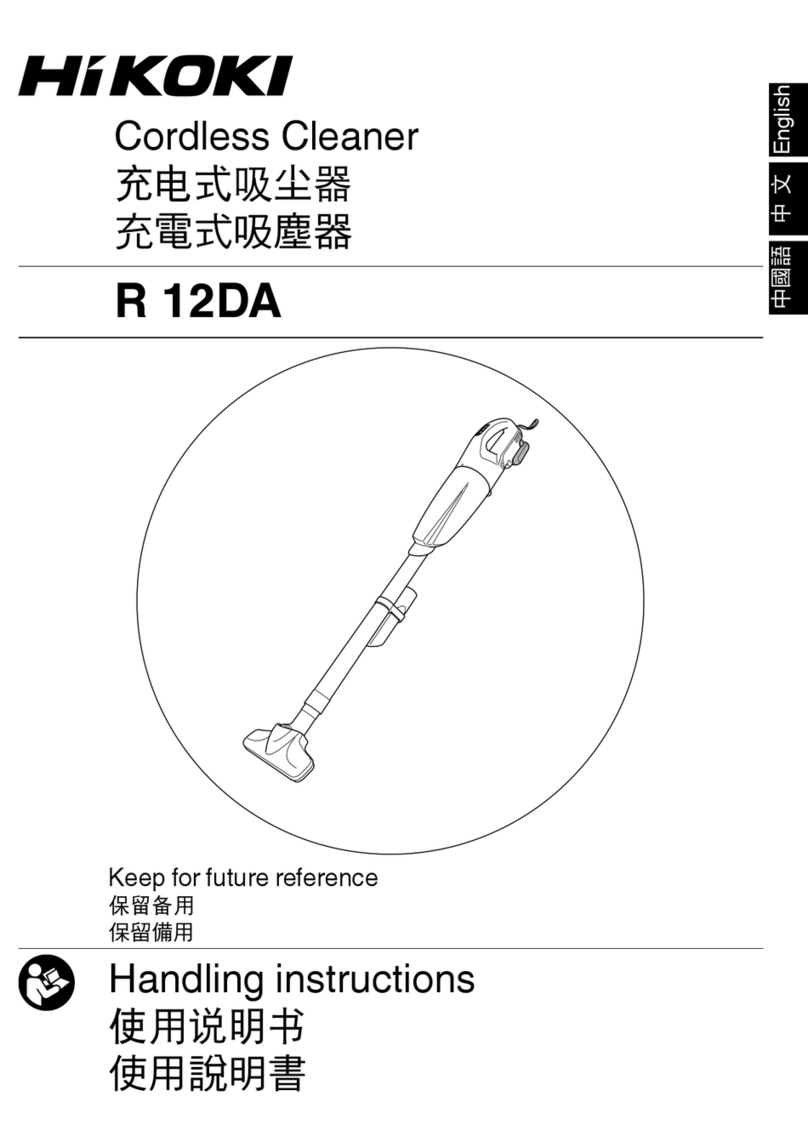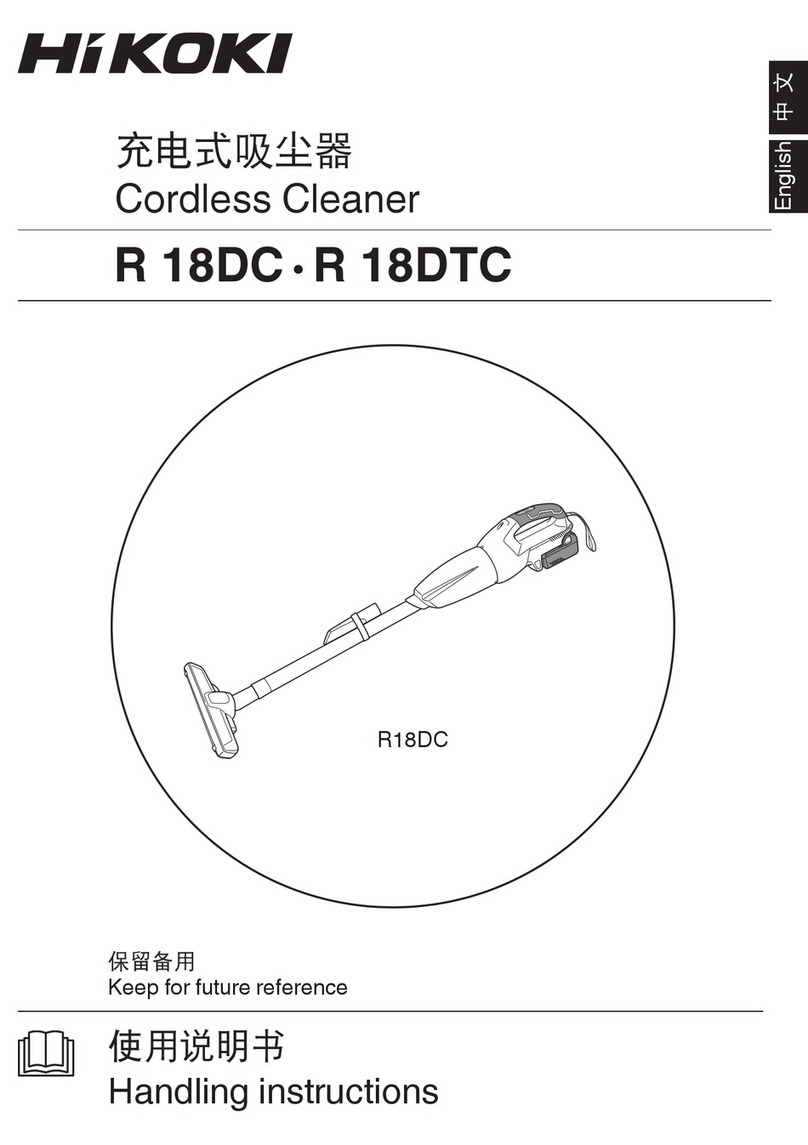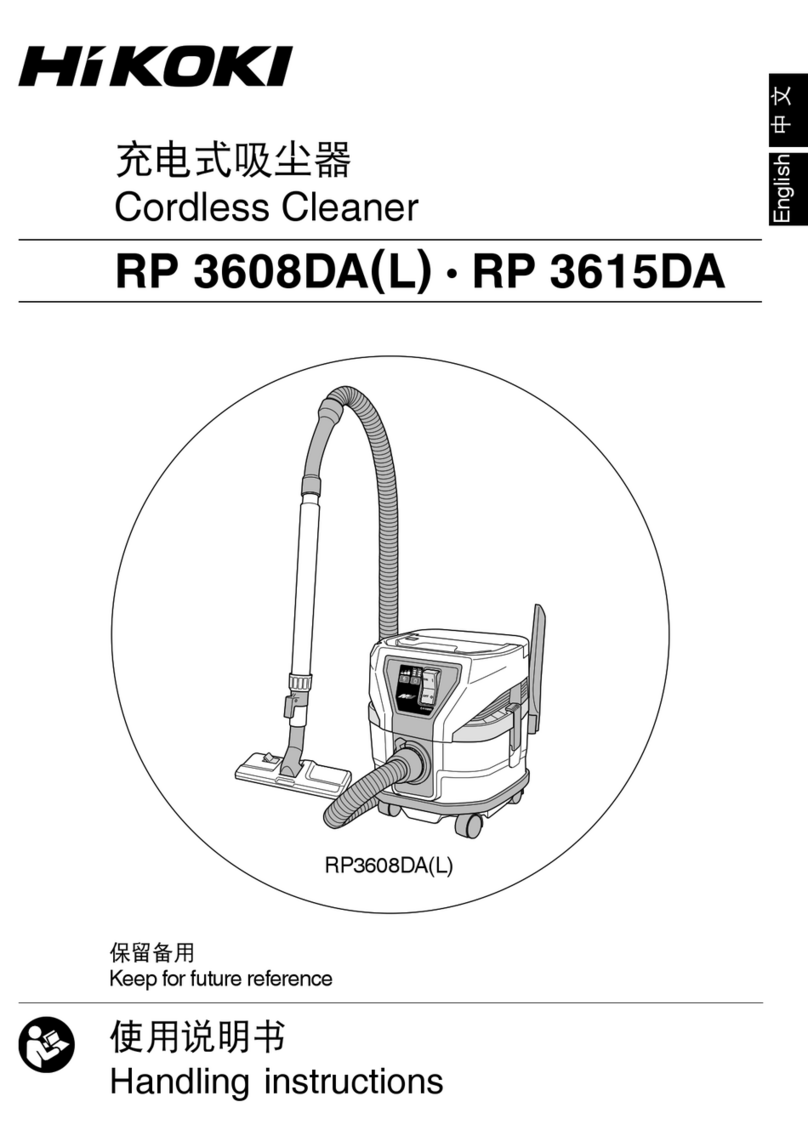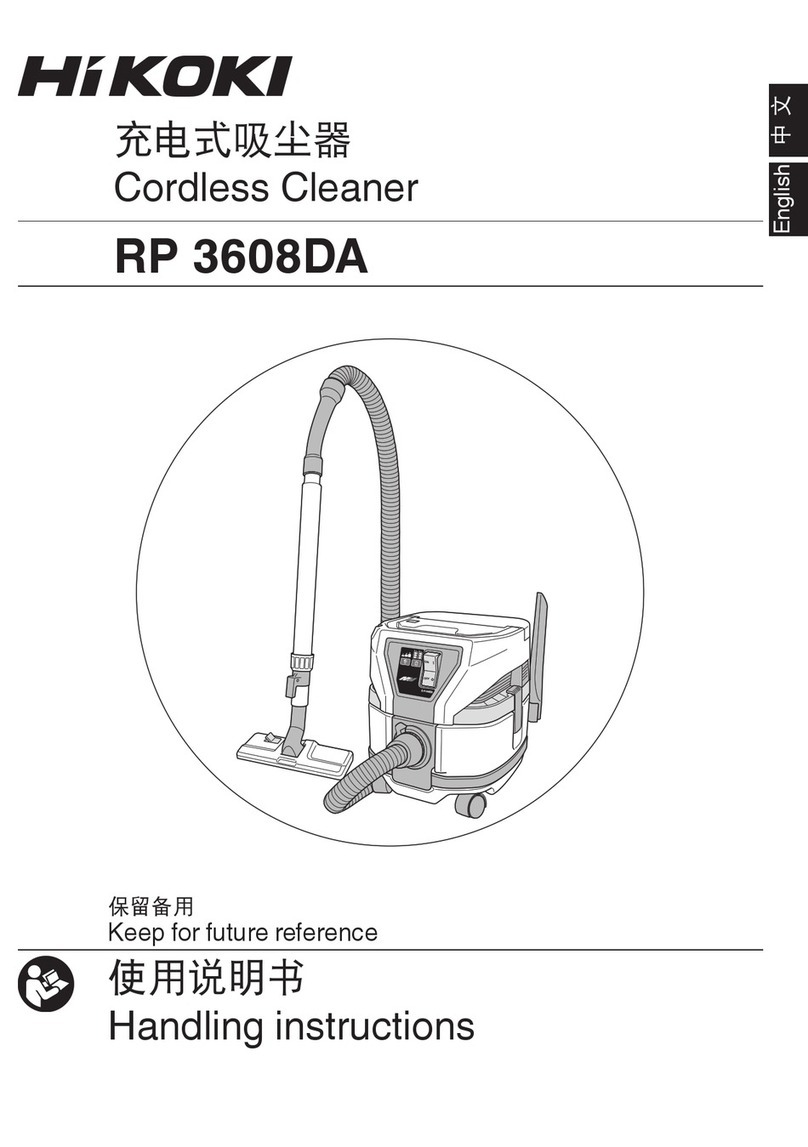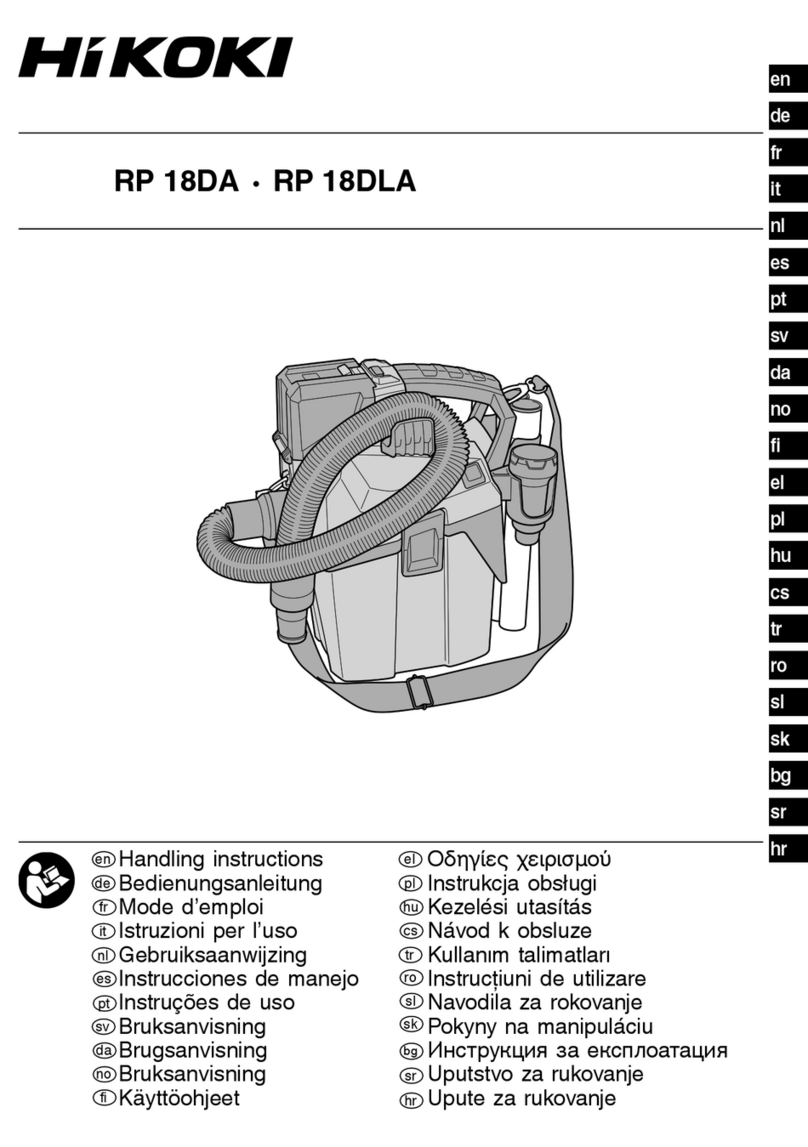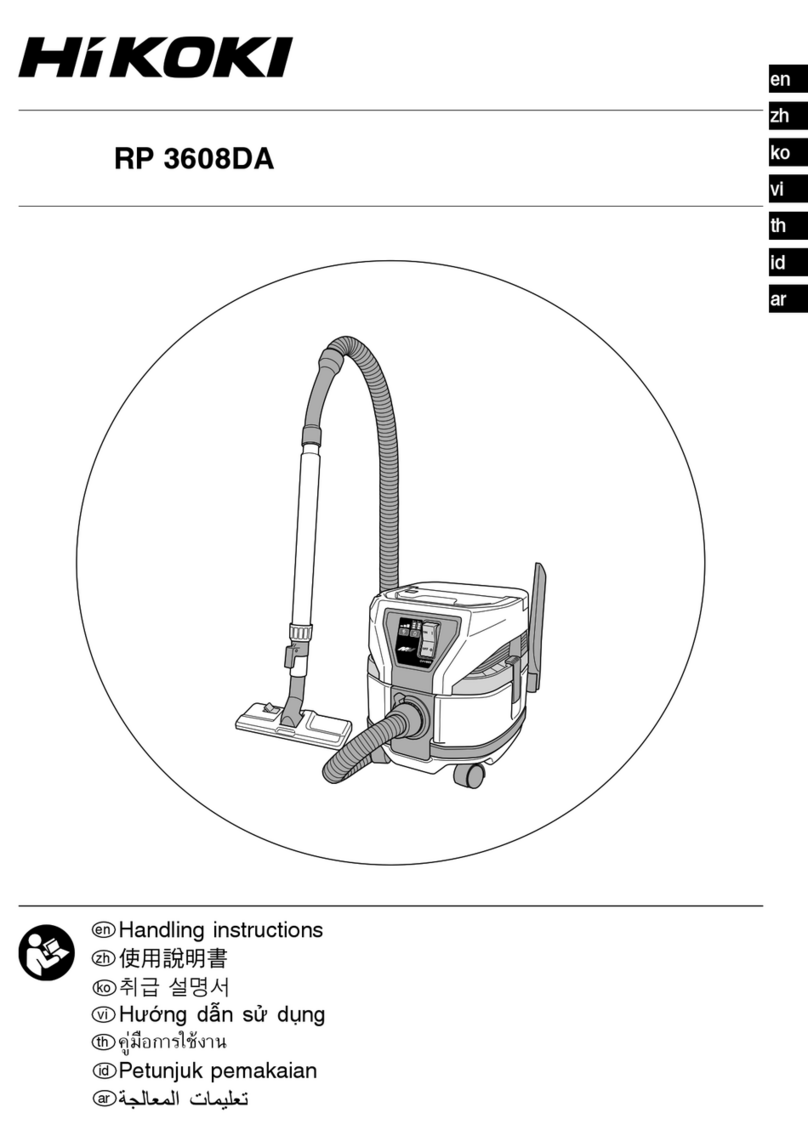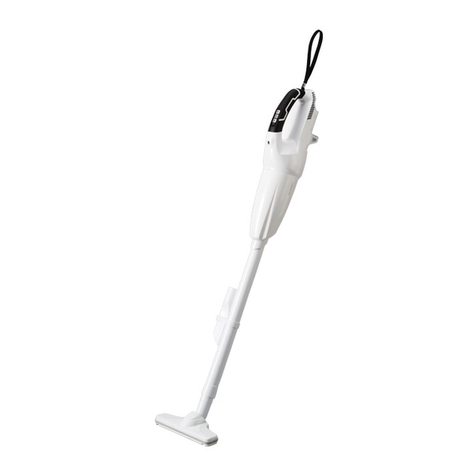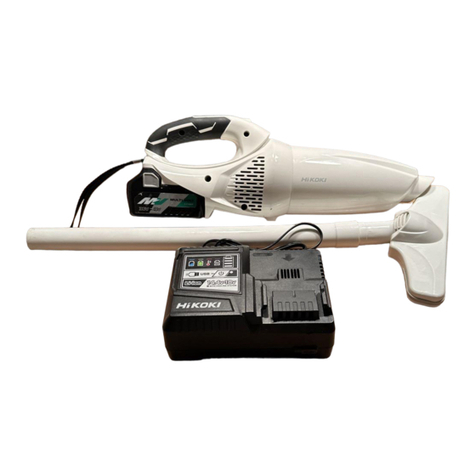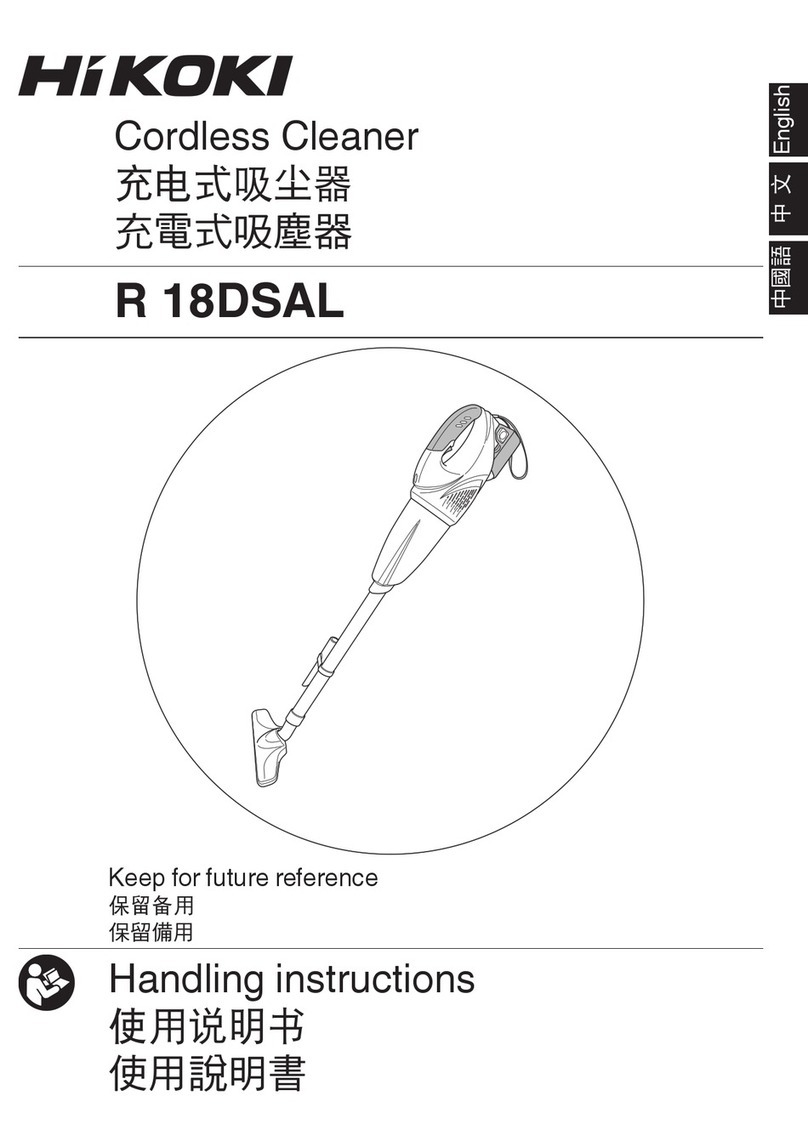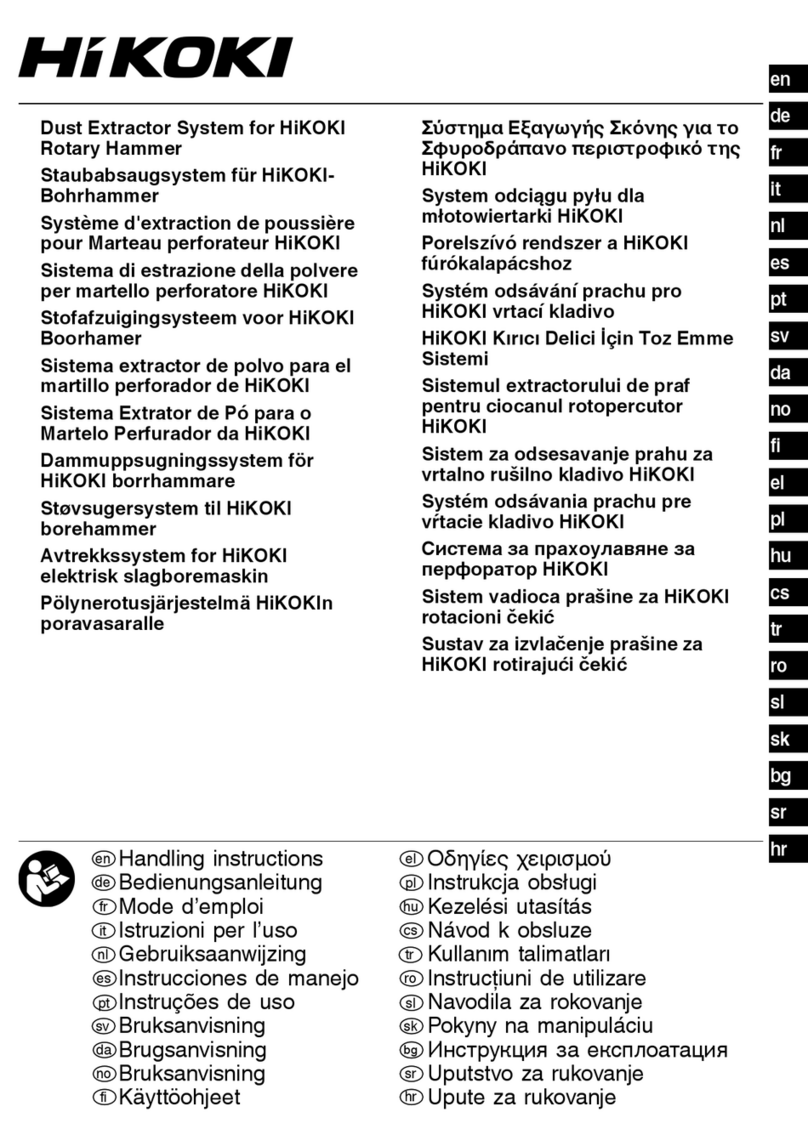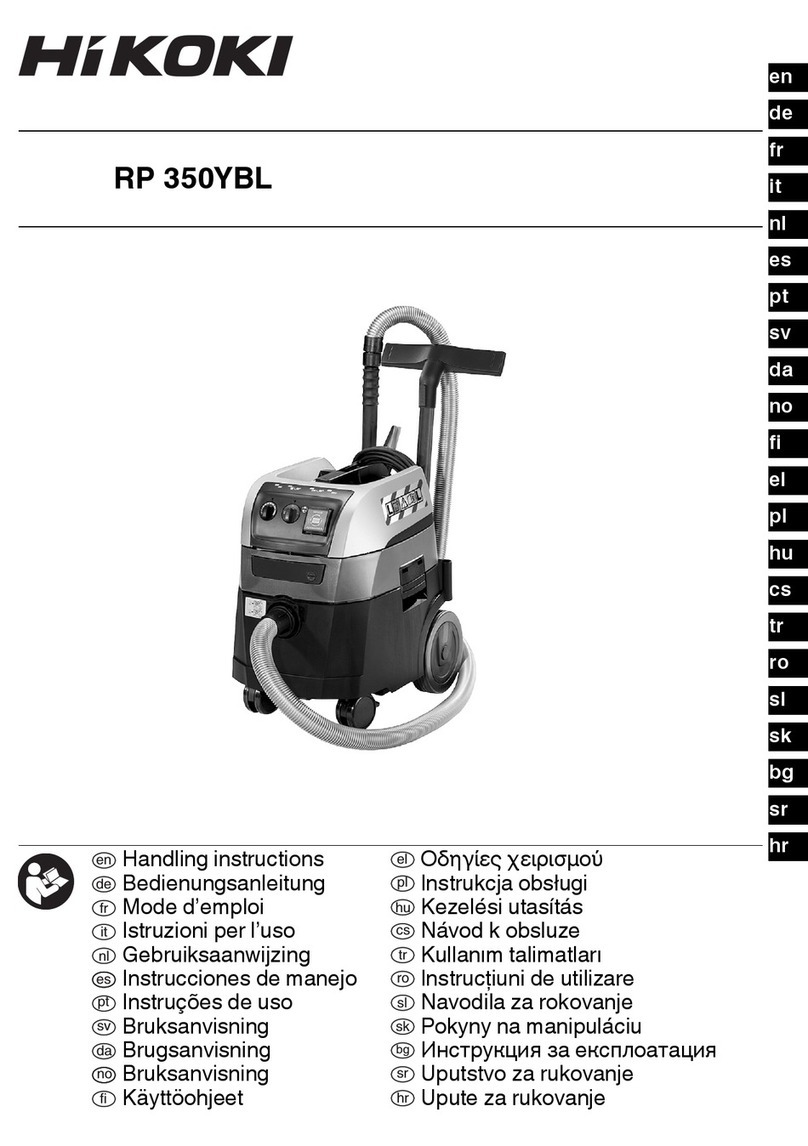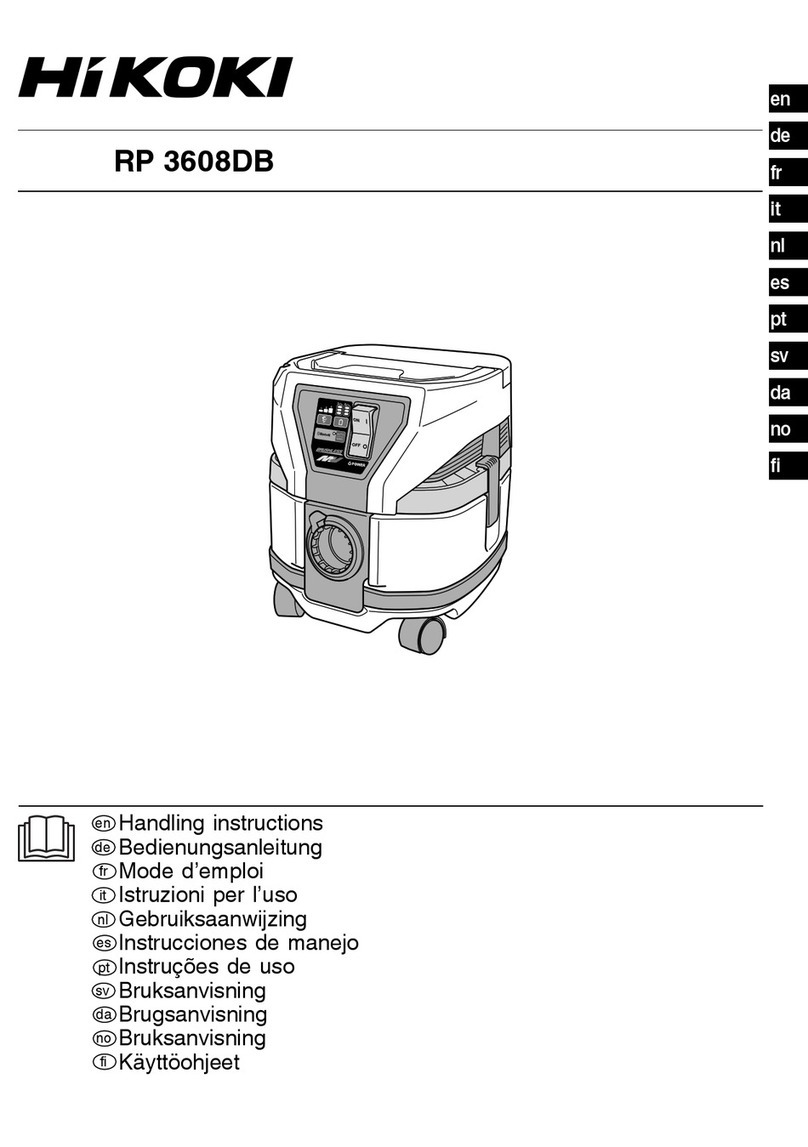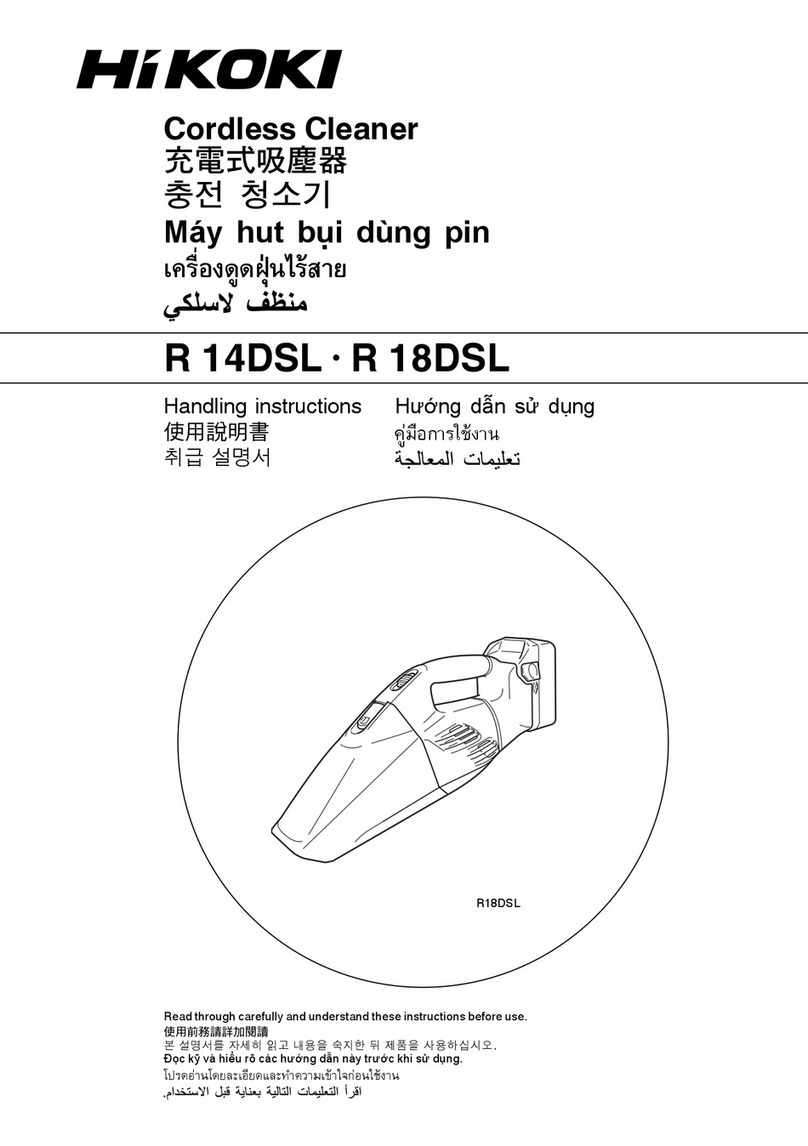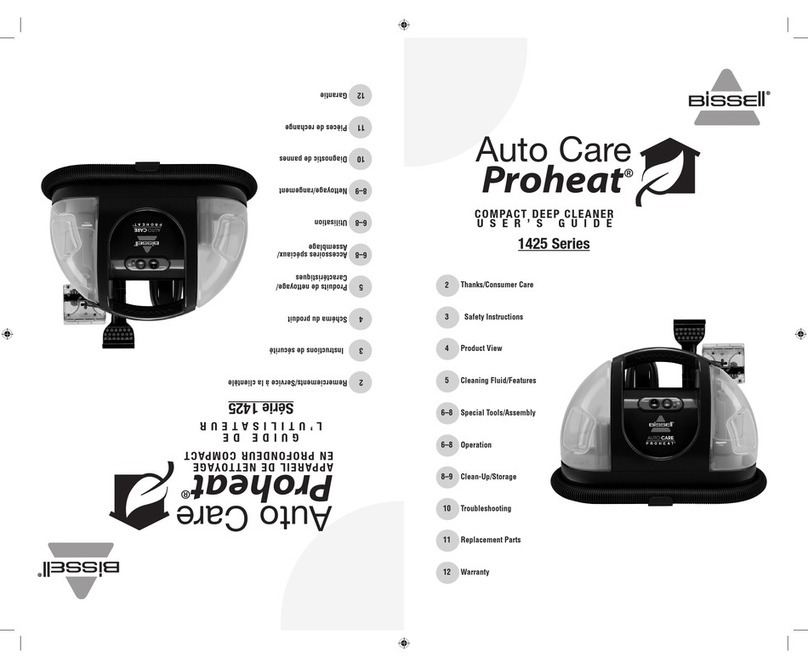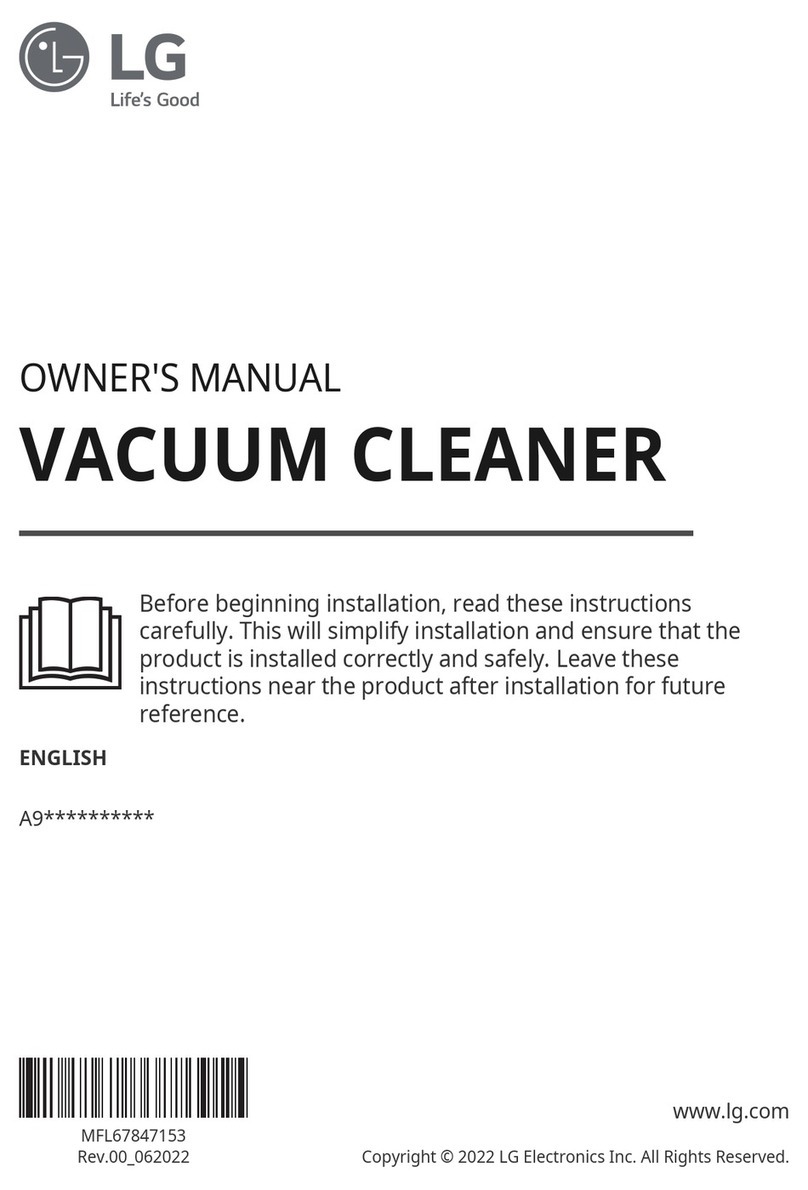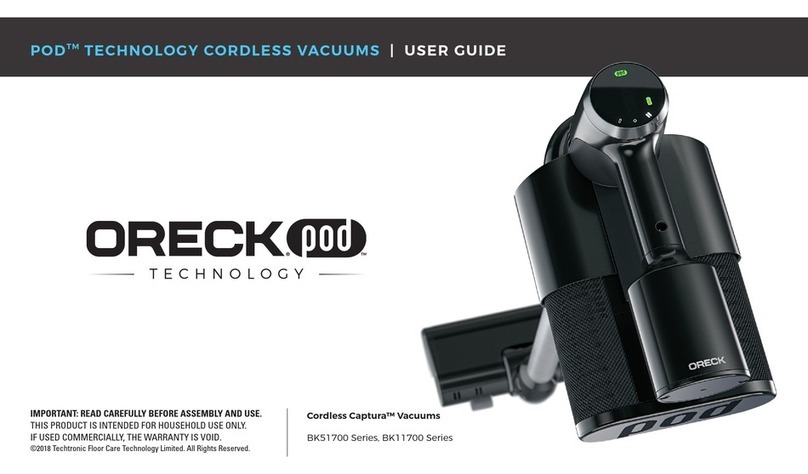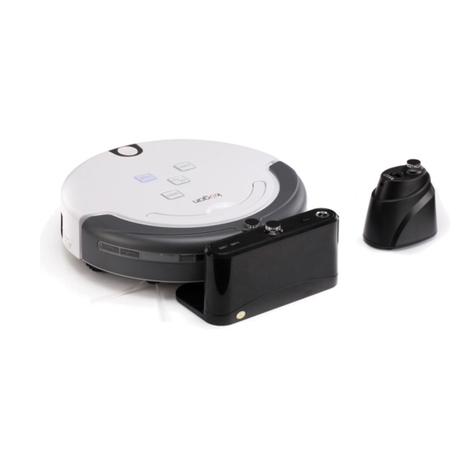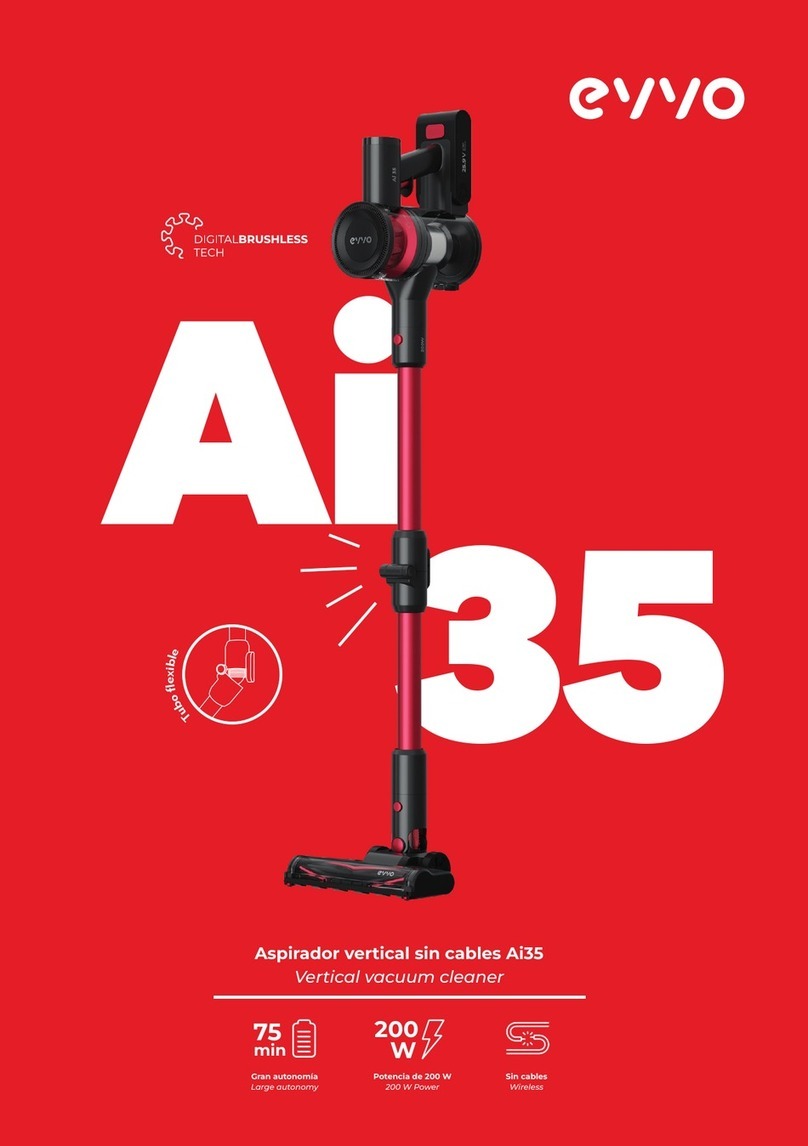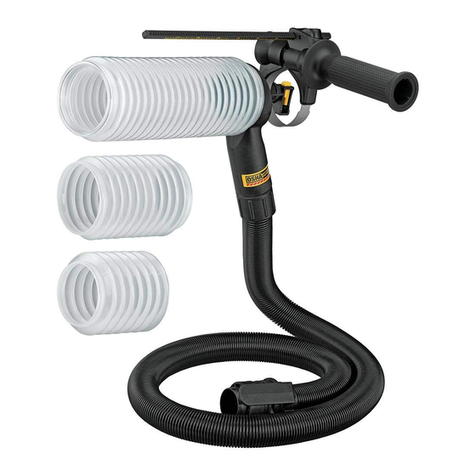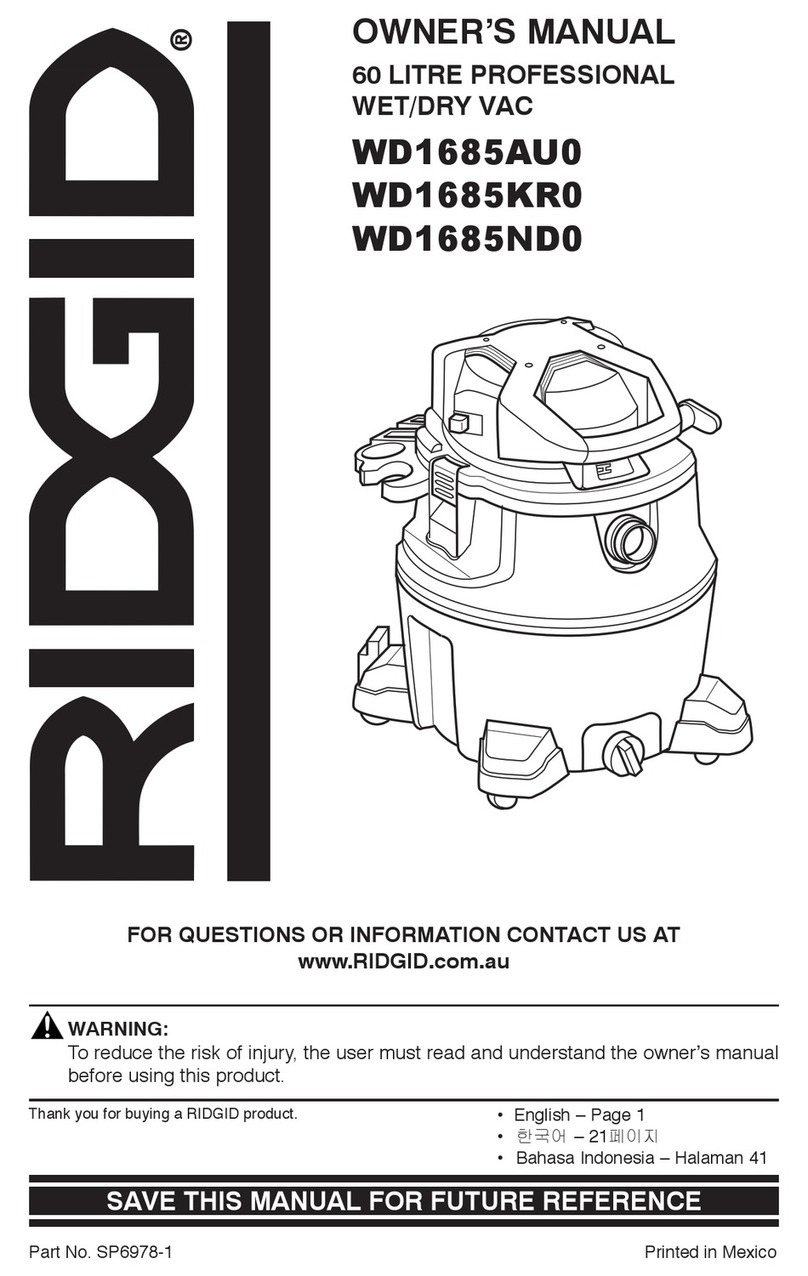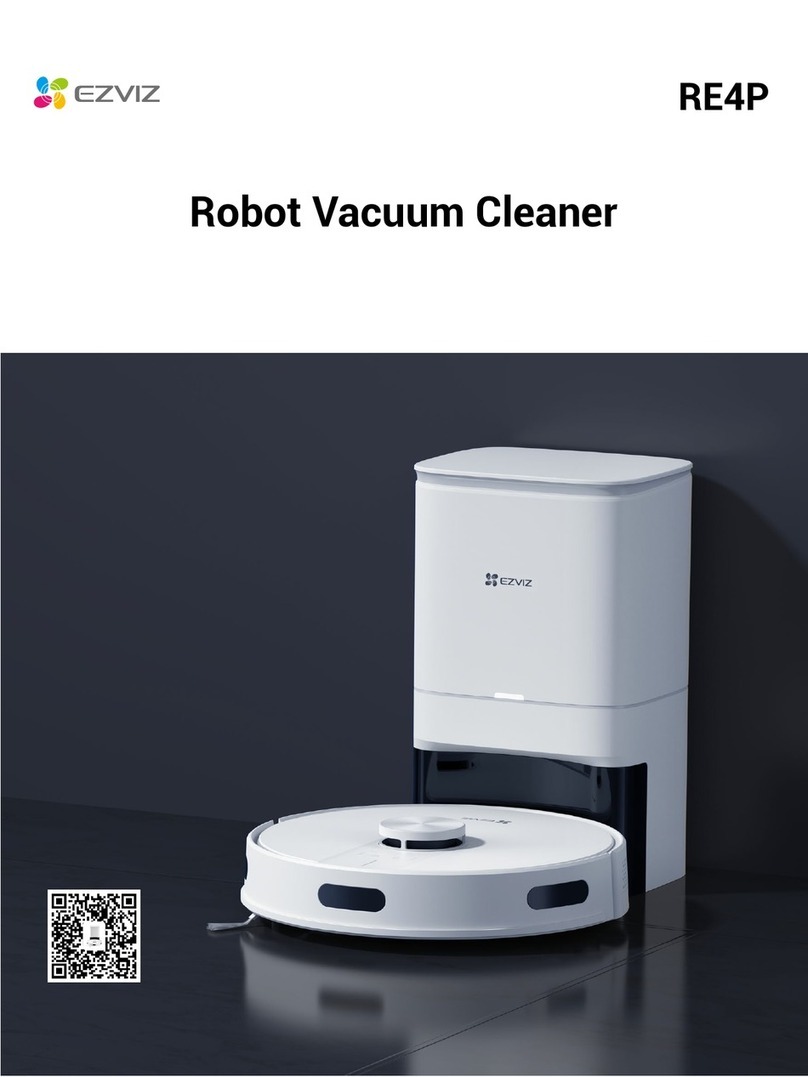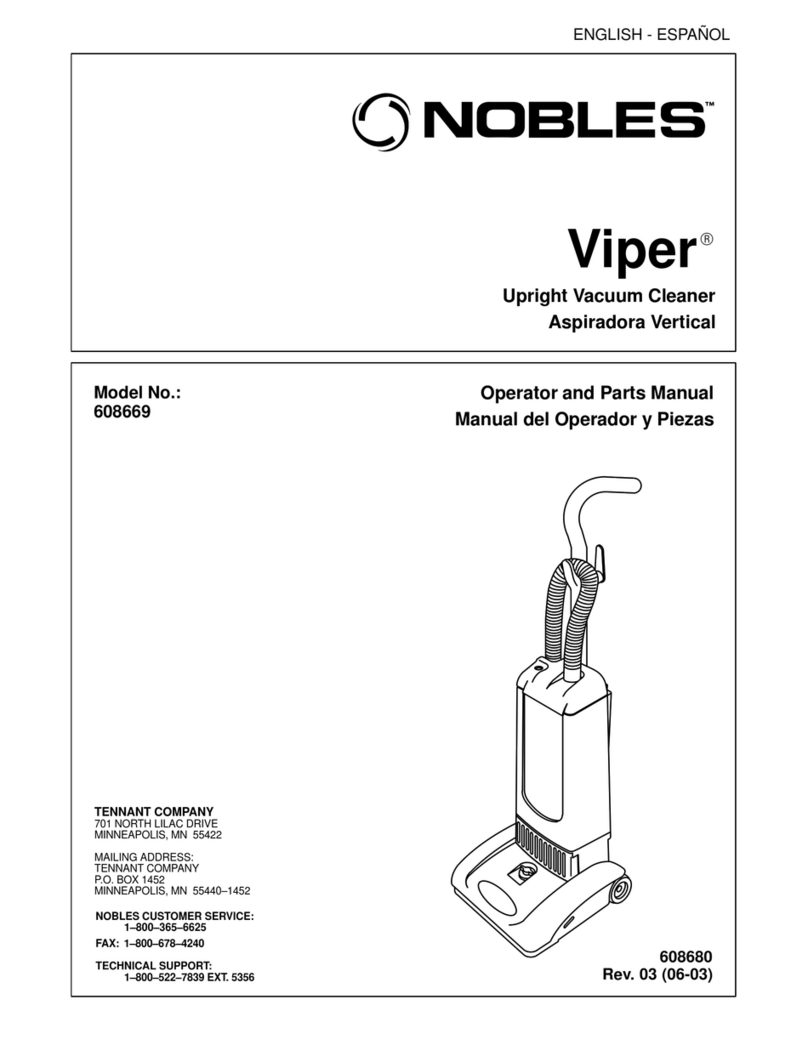
English
7
7. Bring the battery to the shop from which it was purchased as soon as the post-
charging battery life becomes too short for practical use. Do not dispose of the
exhausted battery.
8. Using an exhausted battery will damage the charger.
9. Do not insert object into the air ventilation slots of the charger.
Inserting metal objects or inflammables into the charger air ventilation slots will
result in electrical shock hazard or damaged charger.
10. Prevent the appliance from sucking in the following: Fire or injury may result.
○
Foaming liquids such as oil, hot water, chemicals or detergent.
○
Generated spark during metal grinding or cutting.
○
High temperature things, such as lighted cigarette.
○
Inflammable substances (gasoline, thinner, benzene, kerosene, paint, etc.),
explosive substances (nitroglycerine, etc.), combustible substances (aluminum,
zinc, magnesium, titanium, red phosphorus, yellow phosphorus, celluloid, etc.)
○
Sharp things, such as nail and razor.
○
Solidification materials, such as cement powder and toner, and conductive fine
dusts, such as metal powder and carbon powder.
11. Set the filter correctly before use. Do not use the appliance without the filter or with
it set in a wrong position, or do not use a torn filter. May cause failures, such as
motor burnout.
12. This appliance is for indoor use. Do not use in the rain. Keep away from water or
oil.
Malfunction may result as this appliance is not waterproof.
13. Do not use the appliance with its suction opening or exhaust opening obstructed.
The temperature of the motor may rise abnormally, causing troubles such as
deformation of parts or motor burnout.
14. Do not operate the appliance when the suction opening is blocked.
The motor may overheat, causing deformation of parts or malfunction of the motor.
15. When you drop or bump the appliance accidentally, check for breakage, crack, or
deformation in the appliance. Breakage, crack or deformation may cause injuries.
16. When the appliance is out of condition or emits abnormal sound during use,
immediately turn offthe switch and request repair from your local retailer or
authorized servicing agent. If you continue to use the appliance as it is, it may lead
to injuries.
SYMBOLS
WARNING
The following show symbols used for the machine. Be sure that you understand their
meaning before use.
To reduce the risk of injury, user must
read instruction manual. Direct current
V Rated voltage Warning
000BookR10DALChS.indb7000BookR10DALChS.indb7 2017/12/0717:19:552017/12/0717:19:55
